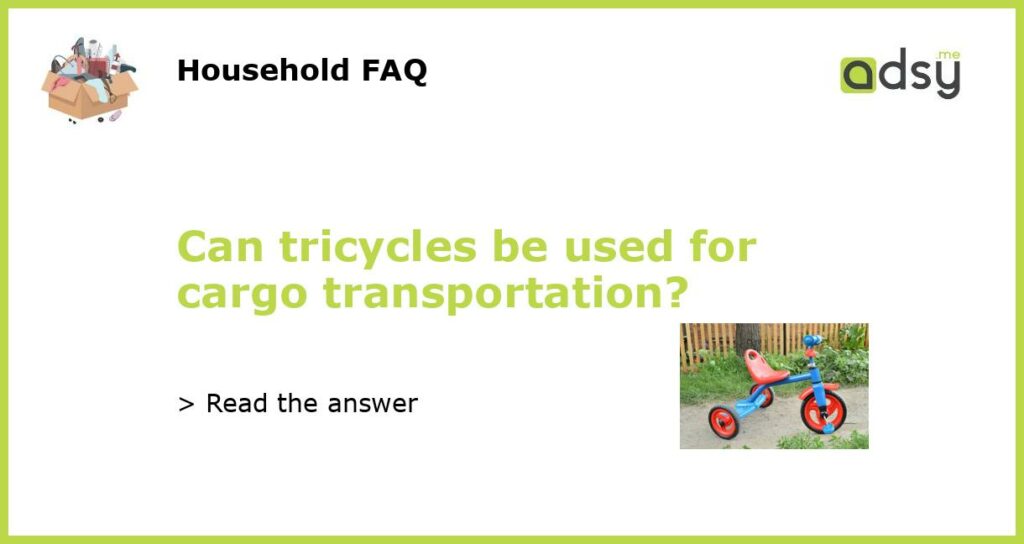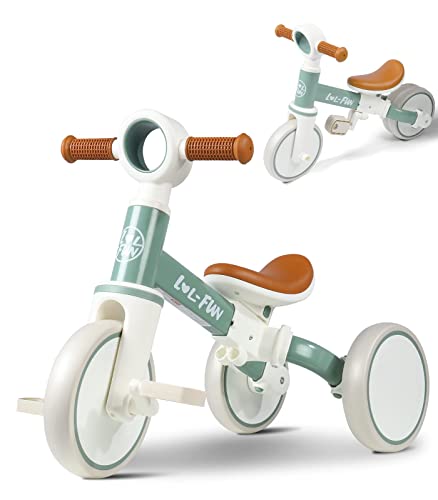Yes, tricycles can be used for cargo transportation
Tricycles are often associated with leisurely rides or a mode of transportation for children, but they can also be used for cargo transportation. In fact, tricycles have been used as a means to transport goods in various parts of the world for centuries. While tricycles may not be able to carry as much cargo as larger vehicles like trucks or vans, they offer several advantages that make them a viable option for certain types of cargo transportation.
Advantages of using tricycles for cargo transportation
Tricycles offer several advantages that make them a practical choice for cargo transportation in certain scenarios. One of the main advantages is their compact size, which allows them to navigate through narrow streets and alleys that may be inaccessible to larger vehicles. This can be particularly useful in urban areas with congested traffic and limited parking spaces.
Tricycles are also environmentally friendly as they do not produce emissions like traditional gas-powered vehicles. This makes them an attractive option for businesses looking to reduce their carbon footprint and operate in a more sustainable manner. Additionally, tricycles are generally less expensive to purchase and maintain compared to larger vehicles, which can be a significant cost-saving factor for small businesses or start-ups.
Furthermore, tricycles are a convenient mode of transportation for last-mile deliveries. They can access areas that are not easily reached by larger vehicles and can navigate quickly through traffic congestion. This makes them particularly suitable for delivering cargo in urban areas where congestion and parking can be major challenges.
Lastly, tricycles offer a personal touch to cargo transportation. Unlike traditional delivery trucks or vans, tricycles allow the delivery person to interact with the community and customers on a more personal level. This can enhance customer satisfaction and create a positive image for the business.
Use cases for cargo transportation on tricycles
Tricycles can be used for a variety of cargo transportation needs. Some common use cases include:
- Food delivery: Many food delivery services are now utilizing tricycles to transport food from restaurants to customers’ homes. The compact size and maneuverability of tricycles make them ideal for navigating through busy streets and delivering food in a timely manner.
- Mail and package delivery: Tricycles can also be used for delivering mail and packages in urban areas. Postal services in some countries have adopted tricycles as an efficient and environmentally friendly mode of transportation for last-mile deliveries.
- Cargo transportation in tourist areas: Tricycles are commonly used for transporting luggage and other cargo in tourist destinations, such as beach resorts or historical sites. Their compact size and ability to navigate through crowded areas make them well-suited for this type of transportation.
- Local produce delivery: Tricycles can be used to transport locally grown produce from farms to local markets or restaurants. This allows farmers to sell their products directly to consumers, reducing the need for middlemen and supporting local economies.
- Mobile vending: Tricycles can also be converted into mobile vending units, allowing entrepreneurs to sell products or services directly to customers. This can include anything from food and beverages to customized merchandise.
While tricycles may not be the first thing that comes to mind when thinking of cargo transportation, they offer several advantages that make them a practical choice in certain scenarios. Their compact size, environmental friendliness, and ability to navigate through congested traffic and narrow streets make them well-suited for last-mile deliveries and transportation in urban areas. Whether it’s delivering food, packages, or locally grown produce, tricycles provide an efficient and sustainable solution for cargo transportation.






